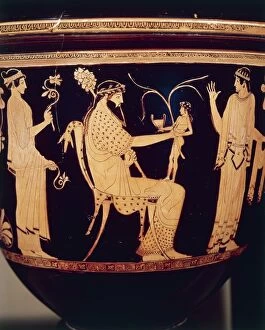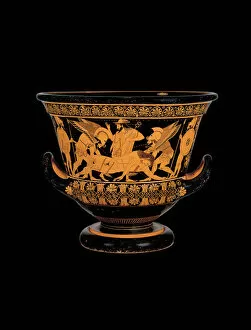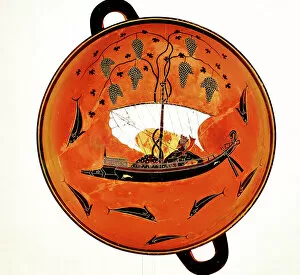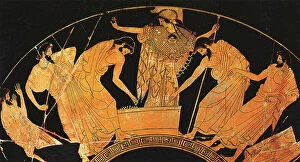Krater Collection
The krater, a vessel used in ancient Greek art and culture, holds a rich history within its elegant form
All Professionally Made to Order for Quick Shipping
The krater, a vessel used in ancient Greek art and culture, holds a rich history within its elegant form. From the Euphronios Krater depicting Sarpedon's body carried by Hypnos and Thanatos, to the intricate red-figure bell krater by Altamura Painter, these masterpieces showcase the artistic prowess of their creators. The Sphinx of Naxos adds an air of mystery with its enigmatic presence, while the Lucanian Calyx-Krater transports us back to 400 BC with its earthenware charm. Intriguing scenes unfold on these vessels; Dionysus and two Maenads dance across an Attic black-figured amphora from ca 550-530 BC, while Dionysius himself sails amidst dolphins on an Ancient Greek dish from 530 BC. Black figures come alive on another Attic krater as they depict various tales from Greek mythology. Even in death, the kraters serve a purpose - a terracotta funerary krater from the 8th century B. C. Stands as a testament to ancient burial customs. The Garden of Hesperides springs forth on an Apulian Krater created by Lycurgus Painter around 360 BC, capturing our imagination with its lush beauty. One cannot overlook the Francois Vase's detailed portrayal of Peleus and Atalanta engaged in a fierce hunt for the Calydonian Boar during the 6th century BC. Lastly, we delve into geometric patterns adorning Thebes' Krater from the 7th century BC - showcasing how art evolved over time. These diverse examples highlight not only Greece's artistic heritage but also provide glimpses into their myths and legends. Each stroke tells stories that have captivated generations throughout history – reminding us that even through fragments preserved over centuries, art has enduring power to transport us across time and immerse us in ancient worlds.
















































